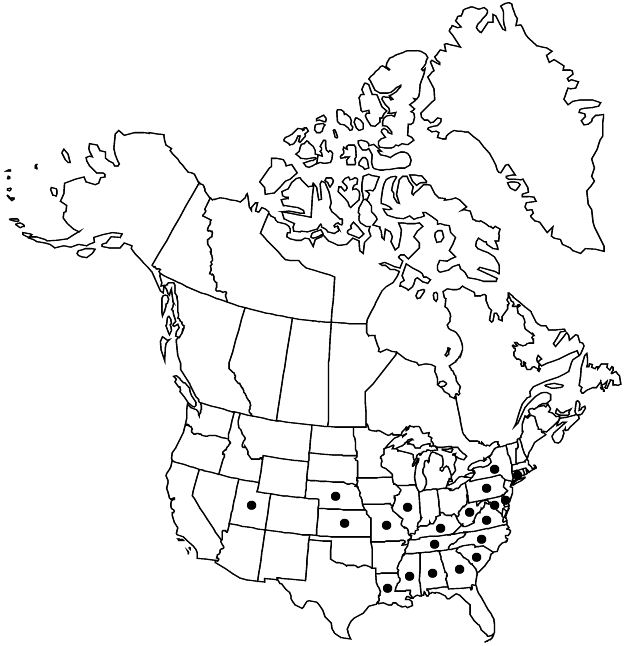Hibiscus syriacus
Sp. Pl. 2: 695. 1753.
Shrubs to 4 m. Stems: twigs ± glabrous except for line of minute, curved hairs running length of internode. Leaves: stipules linear to filiform, 2.5–12 mm; petiole mostly 1/4–1/2 blade, densely hairy adaxially; blade broadly rhombic-ovate, usually 3-lobed, sometimes unlobed in inflorescence, 3.5–9.5 × 2.5–8.5 cm, base cuneate or rounded, margins coarsely crenate-serrate, apex acute to short-acuminate, surfaces glabrate, midvein with nectary abaxially. Inflorescences solitary flowers or few-flowered clusters in axils of distal leaves. Pedicels jointed at or near base, to 1.5 cm, densely, minutely stellate-hairy; involucellar bractlets 7 or 8, linear or narrowly oblanceolate, 0.9–2.2 cm, unequal in length, margins not ciliate, densely stellate-hairy throughout. Flowers horizontal or ascending, sometimes double; calyx lobed 1/2 length, broadly campanulate, 1.6–2 cm, lobes triangular, apices acute or short-acuminate, minutely and densely stellate-hairy throughout, nectaries absent; corolla broadly funnelform, petals pink, lavender, blue, or white, usually dark red basally, obliquely obovate, 3.5–7.5 × 2.5–5.5 cm, margins entire or repand, sometimes undulate, finely hairy where exposed in bud; staminal column white, 2.5–3.5 cm, bearing filaments nearly throughout, free portion of filaments not secund, mostly 1.5–3 mm; pollen cream; styles white, 3–8 mm, branches sometimes of unequal lengths; stigmas white. Capsules greenish tan, ovoid, 1.5–2.5 cm, apex apiculate, minutely, densely stellate-hairy. Seeds reddish-brown, reniform-ovoid, laterally flattened, 4–5 mm, glabrous laterally, long-hairy dorsally, hairs straight, reddish orange. 2n = 40, 80, 90 (all cultivars).
Phenology: Flowering mid–late summer.
Habitat: Old home sites, roadsides, disturbed areas
Elevation: 0–300 m
Distribution

Introduced; Ala., Conn., Del., D.C., Ga., Ill., Kans., Ky., La., Miss., Mo., Nebr., N.Y., N.C., Pa., S.C., Tenn., Utah, Va., W.Va., Asia (China), also in Mexico, Bermuda, Central America, w South America, s Eurasia, Pacific Islands (New Zealand), Australia
Discussion
Asia (China); introduced also in Mexico, Bermuda, Central America, w South America, s Eurasia, Pacific Islands (New Zealand), Australia.
Hibiscus syriacus is not the biblical Rose-of-Sharon, which is identified as Lilium candidum or Tulipa agenensis subsp. boissieri (D. J. Mabberley 2008).
Hibiscus syriacus is widely cultivated as an ornamental and sometimes persists or escapes. It has been reported from southern Canada, Indiana, Ohio, and Texas; I have not seen specimens from those areas. Double and semidouble forms of H. syriacus are in cultivation.
Selected References
None.
Lower Taxa
"unequal" is not a number."/2" is not declared as a valid unit of measurement for this property.